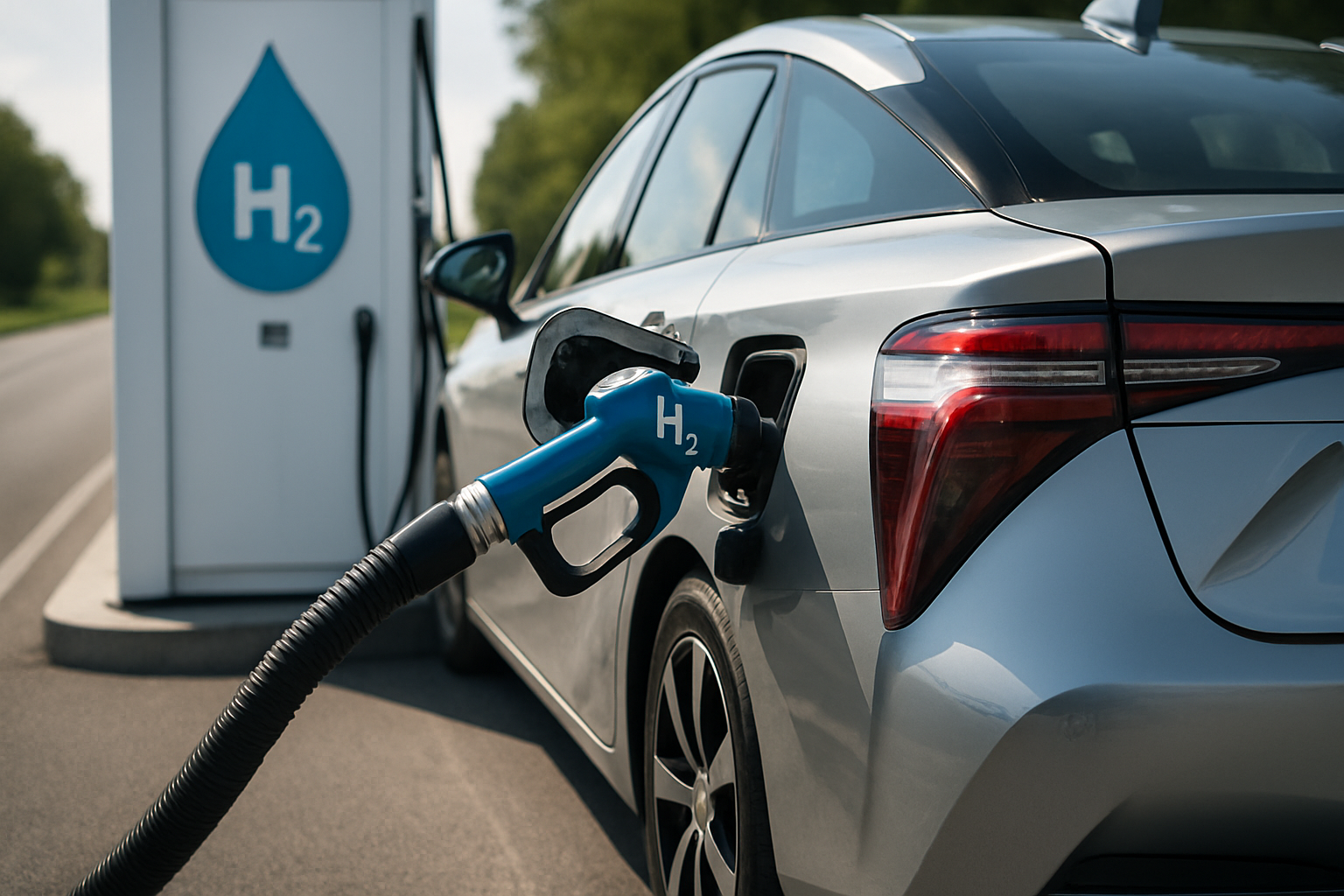Hydrogen Fuel Cell Vehicles: A Glimpse into the Future of Clean Mobility
In the quest for sustainable transportation, hydrogen fuel cell vehicles (FCVs) are emerging as a promising alternative to traditional combustion engines. This groundbreaking technology harnesses the power of hydrogen to produce electricity, offering zero-emission mobility with the convenience of quick refueling. As automakers and governments worldwide invest in hydrogen infrastructure, FCVs are poised to reshape the automotive landscape and pave the way for a cleaner, more efficient future on our roads.

The Science Behind Hydrogen Fuel Cells
At the heart of every FCV lies the fuel cell stack, a marvel of electrochemical engineering. This device consists of multiple layers, each playing a crucial role in the energy conversion process. The anode, cathode, and electrolyte membrane work in concert to facilitate a chemical reaction between hydrogen and oxygen, producing electricity to power the vehicle’s electric motors.
Hydrogen stored in high-pressure tanks feeds into the anode side of the fuel cell. As it passes through a catalyst, typically made of platinum, the hydrogen molecules split into protons and electrons. The protons traverse the electrolyte membrane, while the electrons are forced to travel through an external circuit, generating an electric current. On the cathode side, oxygen from the ambient air combines with the protons and electrons, forming water as the only byproduct.
Advantages of Fuel Cell Technology in Automobiles
One of the most significant advantages of FCVs is their extended range compared to battery electric vehicles. With a full tank of hydrogen, many fuel cell vehicles can travel over 300 miles before needing to refuel. This long-range capability addresses one of the primary concerns associated with electric vehicles—range anxiety.
Refueling an FCV is also remarkably quick, typically taking just a few minutes, similar to filling up a conventional gasoline-powered car. This rapid refueling process gives FCVs an edge over battery electric vehicles, which often require extended charging times, especially for long-distance travel.
Moreover, fuel cell technology offers a higher energy density than lithium-ion batteries, allowing for more compact and lighter energy storage systems. This characteristic is particularly advantageous for larger vehicles like buses and trucks, where battery weight can be a significant limiting factor.
Environmental Impact and Sustainability
From an environmental perspective, FCVs offer a compelling proposition. During operation, these vehicles produce zero tailpipe emissions, with water vapor being the only byproduct. This clean operation significantly reduces local air pollution, particularly in densely populated urban areas where air quality is a growing concern.
However, the environmental benefits of FCVs extend beyond just tailpipe emissions. The hydrogen used in these vehicles can be produced through various methods, including electrolysis powered by renewable energy sources like wind and solar. This green hydrogen production pathway creates a truly sustainable transportation ecosystem, from energy generation to vehicle operation.
Challenges and Hurdles in FCV Adoption
Despite their promising potential, FCVs face several challenges on the road to widespread adoption. One of the most significant hurdles is the lack of hydrogen refueling infrastructure. While efforts are underway to expand the network of hydrogen stations, their scarcity compared to conventional gas stations or even electric charging points remains a major obstacle.
The cost of fuel cell technology is another barrier to mass adoption. The use of precious metals like platinum in fuel cell catalysts contributes to higher production costs, making FCVs more expensive than their conventional counterparts. However, ongoing research into alternative catalyst materials and manufacturing techniques shows promise in reducing these costs over time.
The Role of FCVs in a Diverse Automotive Landscape
As we look to the future of transportation, it’s clear that no single technology will dominate the automotive landscape. Instead, a diverse ecosystem of propulsion systems, including battery electric, fuel cell, and potentially other emerging technologies, will likely coexist to meet various transportation needs.
FCVs are particularly well-suited for long-haul transportation, heavy-duty vehicles, and applications where quick refueling is essential. In these sectors, the advantages of fuel cell technology—long range, rapid refueling, and high energy density—can be fully leveraged.
Moreover, the development of FCVs is driving innovation in related fields, such as hydrogen production, storage, and distribution. These advancements have the potential to benefit not only the automotive sector but also other industries seeking to decarbonize their operations.
In conclusion, hydrogen fuel cell vehicles represent a fascinating frontier in automotive technology. While challenges remain, the potential benefits of this clean, efficient propulsion system make it a compelling option for the future of transportation. As research continues and infrastructure expands, we may soon see more of these futuristic vehicles on our roads, silently cruising towards a more sustainable automotive future.





